Juan de Gante, duque de Lancaster (6 de marzo de 1340 - 3 de febrero de 1399) fue un noble inglés, cuarto hijo varón —pero tercero superviviente— del rey Eduardo III de Inglaterra y de Felipa de Henao.
Siendo hija de Payne (o Payn) de Roet (o Rouet o Roelt), caballero flamenco oriundo de Henao y armado caballero poco antes de morir en las guerras entre Inglaterra y Francia, dejando tanto a Catalina como a su hermana Felipa -luego esposa del ilustre poeta Godofredo Chaucer- al cargo de sus hermanos Walter e Isabel -fallecida siendo canonesa del convento de St. Waudru, en Mons, por el año 1366-
Thomas Holland (also known as de Holland),[1] 2nd Earl of Kent, 3rd Baron Holand KG (1350/1354 – 25 April 1397) was an English nobleman and a councillor of his half-brother, King Richard II of England.
Alice Holland, Countess of Kent (c. 1350 [1] – 17 March 1416), LG, formerly Lady Alice FitzAlan, was an English noblewoman, a daughter of the 10th Earl of Arundel, and the wife of the 2nd Earl of Kent, the half-brother of King Richard II. As the maternal grandmother of Anne Mortimer, she was an ancestor of King Edward IV and King Richard III, as well as King Henry VII and the Tudor dynasty through her daughter Margaret Holland. She was also the maternal grandmother of Joan Beaufort, Queen of Scotland.
Lady Alice FitzAlan was born circa 1350 at Arundel Castle in Sussex, England, [2] the second daughter of the 10th Earl of Arundel, and Lady Eleanor of Lancaster. She had six siblings who included Richard FitzAlan, later 11th Earl of Arundel, and Lady Joan FitzAlan, later Countess of Hereford, Essex, and Northampton. She also had three half-siblings from her parents' previous marriages.
Arnold I of Egmond, in Dutch Arnoud, Arend, or Arent van Egmond, ( c. 1337 – 9 April 1409) was Lord of Egmond and IJsselstein.
He was the son of John I of Egmond and his wife, Guida of IJsselstein.
Jolanthe of Leiningen (d. 24 April 1434, the daughter of Frederick VII of Leiningen-Dagsburg and Jolanthe of Gulik)






|
Isabel Goddard 1355-1401
Marguerite d'Enghien, suo jure Countess of Brienne and of Conversano, suo jure Heiress of Enghien, and Lady of Beauvois (born 1365), [1] was a wealthy noblewoman from the County of Hainaut in her own right, having inherited the counties of Brienne and of Conversano, and the Lordship of Enghien from her father Louis of Enghien on 17 March 1394. She was the wife of John of Luxembourg, Sire of Beauvois and the mother of Peter of Luxembourg, Count of Saint-Pol, Count of Brienne and of Conversano who inherited her fiefs, and John II of Luxembourg, Count of Ligny.
Francis of Baux (French: François des Baux, Italian: Francesco de Balzo; c.1330[1] – 23 April 1422) was the first Duke of Andria, Count of Montescaglioso and Squillace, and Lord of Berre, Mison, and Tiano. He was the son of Bertrand III of Baux, Count of Andria and Montescaglioso and his second wife, Marguerite d'Aulnay.[1] Francis's father was a Senator of Rome, Captain General of Tuscany, and Justiciar of Naples.[1] The half-royal Baux family was one of the greatest families of the kingdom after the Duke's marriage to Marguerite of Taranto in 1348
Sueva Orsini
Marie I de Coucy, Dame de Coucy and d'Oisy, Countess of Soissons (April 1366 – after 3 March 1405) was the wife of Henry of Bar, and the granddaughter of King Edward III of England and Philippa of Hainault. She succeeded to the title of suo jureCountess of Soissons, on 18 February 1397, upon the death of her father, Enguerrand VII de Coucy. In addition to her titles, she also owned numerous estates in North-Eastern France. Mary, Queen of Scots, King Henry IV of France, and the Bourbon kings of France were her direct descendants.
Marie was born in April 1366 at Coucy Castle, Picardy, France. She was the eldest daughter of a powerful French nobleman, Enguerrand VII de Coucy, and Isabella of England, daughter of King Edward III of England and Philippa of Hainault. She had a younger sister, Philippa de Coucy (1367–1411), who married Robert de Vere, 9th Earl of Oxford, Marquess of Dublin, Duke of Ireland.
Ewen MacDougall, Lord of Lorn 1325-1362 Eóin MacDúbhgaill

George Douglas, 1st Earl of Angus (1380–1403) was a mediaeval Scottish nobleman.
Robert Dominus Boyd, 1st Baron Boyd of Kilmarnock (Boyd), lll, Knight 1298-1333 Sir Robert Boyd II y wife of Robert Boyd
Galéas1 était le fils de Mathieu Ier (1250-1322) et de Bonacosa Borri (NC-1321). Il naquit, fort opportunément2, le jour même de la victoire de Desio remportée par son arrière-grand-oncle Otton Visconti sur les troupes de la faction guelfe des Della Torre.
En 1298, il est nommé podestat de Novare et ne le restera que jusqu'en 1299.

|
|
|

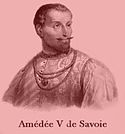
Sibila de Baugé
John I of Armagnac (1311 – 16 May 1373), son of Bernard VI and Cecilia Rodez, was Count of Armagnac from 1319 to 1373. In addition to Armagnac he controlled territory in Quercy, Rouergue and Gévaudan. He was the count who initiated the 14th century expansion of the county.
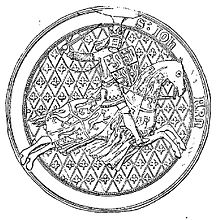 Beatrice of Clermont
Beatrice of Clermont

Mary (1323–1380), daughter of the aforementioned Guy and Margaret of Valois, the sister of King Philip. Guy I of Blois
Eberhard II, called "der Greiner" (the Jarrer) (after 1315 – 15 March 1392, Stuttgart), Count of Württemberg from 1344 until 1392.
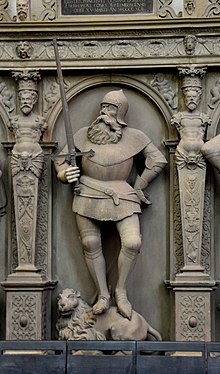
|

|
Blanche of Ponthieu Jean II de Ponthieu, Count of Aumale, and Catherine d'Artois (1296 – November 1368).
Isabella of Valois, Duchess of Bourbon or Isabella of France (1313 – 26 July 1383), was a Petit Fille of France, and a daughter ofCharles of Valois by his third wife Mahaut of Châtillon.

Guillaume Chamaillard, (ou de Chamaillard), sire d'Anthenaise (v.1320 - † v1391) est le fils de Jean Chamaillard, seigneur de Montambert, Trélazé, etc., et d'Emmanuelle d'Anthenaise, unique héritière de la famille d'Anthenaise.
Marie de Beaumont-Brienne, fille de Jean de Beaumont-Brienne et de Isabeau d'Harcourt.
Charles of Blois-Châtillon (1319 – 29 September 1364) "the Saint", was the legalist Duke of Brittany from 1341 to his death via his marriage to Joan of Penthiève, holding the title against the claims of John of Montfort. He was later canonized as a Saint of the Roman Catholic Church for his devotion to religion. This canonization was later annulled, although he remains beatified.
Joan was the only daughter of Guy, Count of Penthièvre, the brother of Duke John III, and Jeanne d'Avaugour. Through her father she became Countess of Penthièvre in her own right, and established her ducal claims.

Peter IV, ( Catalan: Pere, IPA: [ˈpeɾə]; Aragonese: Pero, IPA: [ˈpeɾo]; Spanish: Pedro, IPA: [ˈpeðɾo]) (5 September 1319 – 6 January 1387), called el Cerimoniós ( Catalan for "the Ceremonious") or el del punyalet ( Catalan for "the one of the little dagger"), was the King of Aragon, King of Sardinia and Corsica (as Peter I), King of Valencia (as Peter II), and Count of Barcelona (and the rest of the Principality of Catalonia as Peter III) from 1336 until his death. He deposed James III of Majorca and made himself King of Majorcain 1344. His reign was occupied with attempts to strengthen the crown against the Union of Aragon and other such devices of the nobility, with their near constant revolts, and with foreign wars, in Sardinia, Sicily, the Mezzogiorno, Greece, and the Balearics. His wars in Greece made him Duke of Athens and Neopatria in 1381.
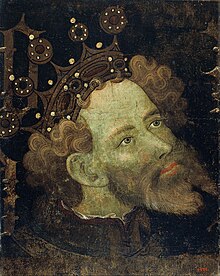
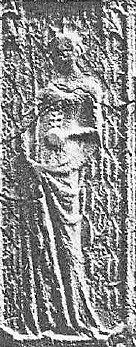

Ricciarda Visconti (†1366).
|
|
|
|
|
|
Stefano Visconti (* c. 1287 - † 4 de julio de
1327) fue un miembro de la familia Visconti, hijo de Mateo I Visconti y su esposa Bonacosa Borri.
Valentina Doria, hija de Barnabò Doria de Sassello y
de Eliana Fieschi de Lavagna.


|
|
Pierre I
de Brosse, señor de Sainte-Severe, d' Huriel y de Boussac
Pierre I de
Brosse, seigneur de Sainte-Severe, d' Huriel et de
Boussac
Bertrand
III de La Tour d' Auvergne
Isabelle
de Lévis
- Né
vers 1300
- Décédé
en 1372 , à l’âge de peut-être 72 ans
Parents
Parents
Guy V Turpin de Crissé
- Né
après 1330
- Décédé
en 1397
Parents
Parents
Charles
de Châtillon, conde Penthievre y de Goelo vizconde de
Limoges
Charles de
Châtillon, comte de Penthievre et de Goelo vicomte de
Limoges
Jeanne
de Bretagne, condesa de Penthièvre
Jeanne de
Bretagne, comtesse de Penthièvre
Catherine
d' Ancenis
Bertrand DE LA TOUR
D'AUVERGNE IV
- Né
vers 1355
- Décédé
le 7 septembre 1423 (dimanche) , à
l’âge de peut-être 68 ans
- Seigneur
de Montgâcon du chef de sa femme.
Parents
|
|
Guy VI le Vaillant de La
Trémoille
- Né
en 1350
- Décédé
entre 1397 et 1398 - Rhodos, Grèce
- Grand
Chambellan héréditaire de Bourgogne
Parents
- Née
entre 1364 et 1365
- Décédée
en 1409 - Pau
Parents
- Décédé
le 25 octobre 1415 (mercredi) - à
la bataille d'Azincourt
Parents
|
Jeanne de Penthièvre, dite la boiteuse,
née environ 1324, morte le 10 septembre 1384, duchesse de Bretagne, dame de Mayenne1, d'Avaugour, de l'Aigle et de Châtelaudren, comtesse de Penthièvre et de Goëllo, vicomtesse de Limoges, fille deGuy
de Bretagne, vicomte de Limoges puis comte de Penthièvre, et
de Jeanne, dame d'Avaugour, et comtesse de Goëllo.
Bertrand IV de la Tour, né après 1353,
mort après 1423,
fut seigneur de la Tour et de Montgascon.
Il était fils de Guy, seigneur de La Tour et
d'Oliergues, et de Marthe Rogier de Beaufort, fille
de Guillaume II, seigneur de Beaufort-en-Vallée et de Marie de
Chambon, nièce du pape Clément VI (Pierre Rogier), et
sœur du pape Grégoire XI.
Jean I de rohan (1324-1396)
married Jeanne of Leon (-1372)
Juan de Borbón (1344 -
† Vendôme, 12 de junio de 1393), noble francés, conde de
La Marche, conde de Vendôme y conde
de Castres, fue el que reunió la casa de Vendôme
con la de Borbón, de la que
era descendiente, dando origen a la dinastía directa
de los reyes Borbones de Francia y de España.
Catalina de Vendôme
|
|
Teresa
Gille Lourenço (Lisboa, 1330 - ?)
fue una joven lisboeta (durante mucho tiempo se
pensó que era de origen gallego), hija de
un mercader llamado Lourenço Martins, con la cual
el rey Pedro
I de Portugal mantuvo
una relación amorosa posterior al asesinato
de Inés de Castro
Juan de
Gante, duque de Lancaster (6
de marzo de 1340 - 3 de febrero de 1399) fue un
noble inglés, cuarto hijo varón —pero tercero
superviviente— del rey Eduardo
III de Inglaterra y
de Felipa de
Henao.
Blanca de
Lancaster (1345-1369) fue una aristócrata
inglesa.
|
|
|
|
|
|
|
|
|
|
|
|
|
|
|
|
|
|
|
|
|
|
|
|
|
|
|
|
|
|
|
|
|
No hay comentarios:
Publicar un comentario